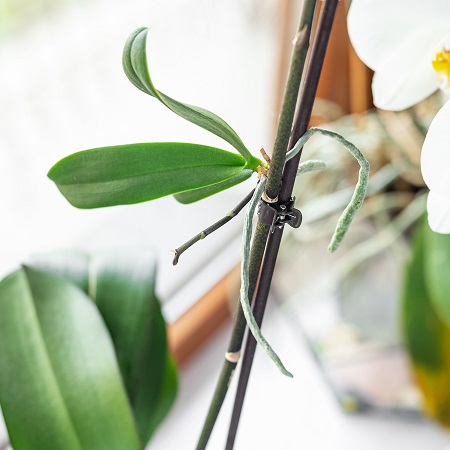Not unlike any other plant in the world, Orchids are subject to several methods of propagation. Here we’ll discuss 4 methods to increase your supply of plants, some requiring specific methods, others subject to several options.
Propagation by Meristematic Process (Meristems)
This method will produce offspring identical to the parent plant in every respect. Growth habit, flower color, shape and size and cultural requirement. This method can be used for virtually any Orchid plant. Typically performed in a sterile laboratory environment, a newly formed growth tip of the plant is dissected and placed on a sterile, Agar solution for nature to perform its miracle. From this small piece of tissue, where rapid cell development will occur, a virtual limitless number of plantlets’ can be produced. A very valuable method especially if you’re cloning a very rare or valuable plant.

Propagation by Keikei
Some plants, typically cane Dendrobiums, Nobile type Dendrobiums and Phalaenopsis can produce small plants from the growth nodes along their canes and flower spikes. In this method once again, the small plant will be identical to all aspects of the parent plant, but lacks the ability to produce thousands of plants as can the Meristem process (unless, of course, the Meristematic process is used from the get go). Once the baby plant has developed a sufficient root system to sustain its growth, it can be carefully severed from the mother plant and potted up on its own.
Propagation by Hand Pollination
In this method, one Orchid flower assumes the duty of “Pod Parent” and the other of “Pollen Parent”. The pollen is removed from the pollen parent and placed into the stigma of the pod parent to begin reproduction process. As the flower rapidly withers, the seedpod begins to swell and mature. Depending on the plant species involved the ripening process can take several months to maturity. Since the seed is no larger than a spec of dust it must be sewn in a sterile Agar to begin the germination process. This method of propagation will produce offspring of amazing variety, combining (hopefully) the desirable traits of both parents. No different than each one of us and our parents, just less grief!!!
Propagation by Division
Last, but certainly not least, is the good old-fashioned “pulling part” of the plant. This method involves nothing more than sterile cutting tools and strong hands. Depending on the type of plant you decided divide, a division should be no less than 3 or 4 pseudo bulbs (assuming leaves attached to provide food and water). In the case of the Cymbidium, back bulbs (leafless dormant bulbs) can be removed and potted up separately to begin growth. Once divided, allow the plants root system to dry slightly, then pot up as usual. Withhold water until signs of new growth begin then resume normal culture. A slight misting now and then is desirable to prevent the plant from desiccation until new roots form. This method, quite obviously, will also produce identical offspring as that of the original overgrown plant.
Now that you have an overflowing greenhouse full of plants it’s time to decide what to do with them! For the Commercial grower the answer is obvious. For the hobby collector, giving plants away, swapping or bartering for a plant you want or simply donating plants to your local Orchid Society are sure ways to see that your cherished possessions get a good home.
Tom Capranica has been a hobby collector and hybridizer of Orchids for over 20 years, and an active member of the American Orchid Society for about the same length of time. He grows his Orchids in a 450 sq. ft. climate-controlled greenhouse, containing over 300 plants of various genera, primarily Cattleya.
Related Articles & Free Email Newsletter
Cymbidiums, The Orchid That Made the Corsage Famous
How to Prevent Orchid Pests and Problems




Comment here